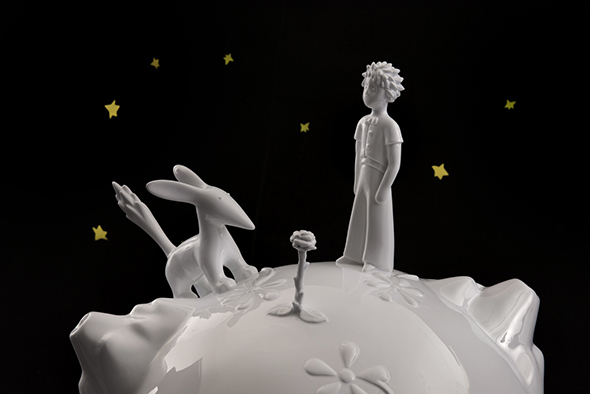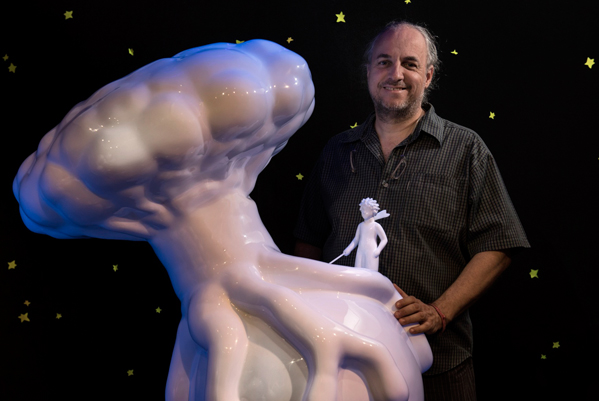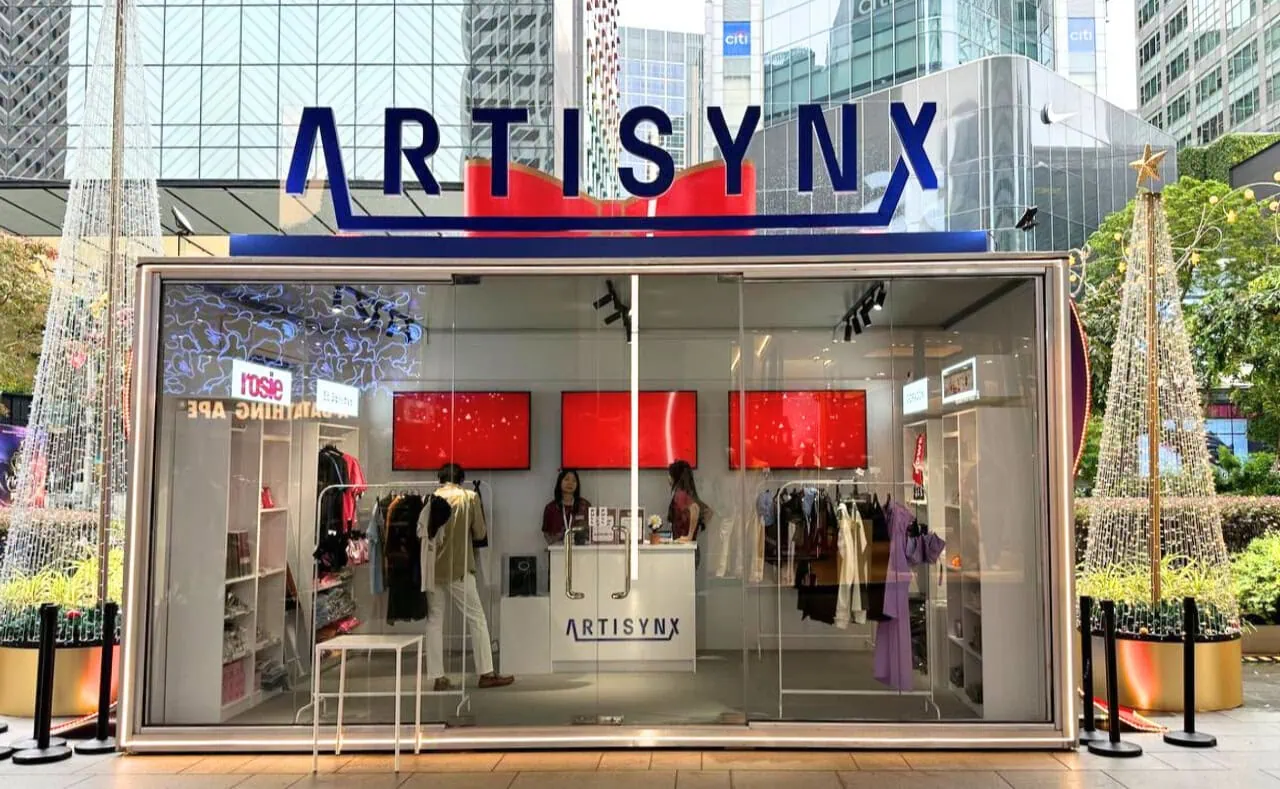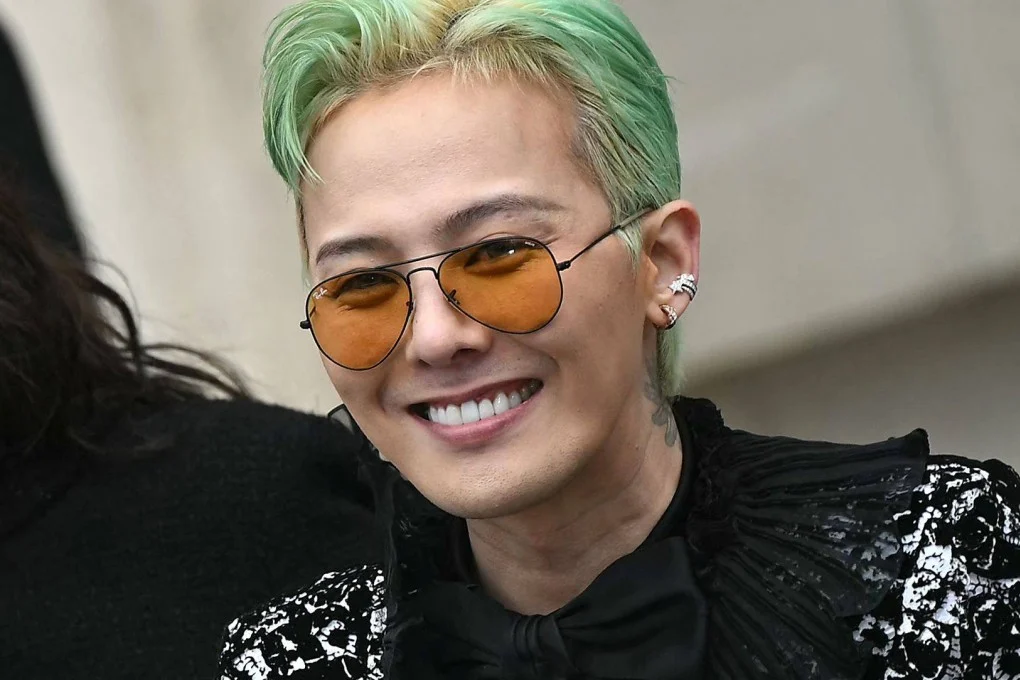If art is beauty and beauty is visual, what then if we can’t see? How do we experience or determine the allure of art in darkness? How does art serve and assert its purpose then? Cue the sense of touch.
Keen on exploring how the sightless see the world (or in this case, admire art), French artist Arnaud Nazare-Aga went about creating white sculptures for an exhibition to be shown in the dark. Inspired by the renowned tale of The Little Prince (Antoine de Saint-Exupery’s pride and joy), the sculptures are coated with luminous paint and presented in black light. So if you’re afraid of stumbling around or worse, accidentally shattering the art pieces, not to worry – it won’t exactly be pitch-black.

Visitors are, nonetheless, encouraged to abandon all visual perception, extend their arms and feel every detail of the statuettes. Limiting yet liberating, it creates an interactive experience that allows you to physically mingle with the artwork.
Titled The Little Prince In The Dark, the exhibition runs from May 6 to June 20 at Alliance Francaise. We chew the fat with the creator of the art pieces on his connection with the lionised author, his artistic process, and the touch-oriented method of experiencing art.
—
Popspoken: How did this exhibition come about?
Arnaud Nazare-Aga: It started with a meeting with Nicolas Delsalle, the secretary general of the Antoine de Saint-Exupéry Youth Foundation, who came into my studio with a project to create sculptures for visually handicapped people, inspired by The Little Prince by Antoine de Saint-Exupéry. It is about making a surface that is suitable for the visually impaired, but also for other people who want to see some sculptures of the Little Prince.
Popspoken: What prompted you to create a series of sculptures based on The Little Prince illustrations?
At the beginning, this project really excited me because I really like the Little Prince book. It was also very impressive because it’s a big responsibility; this book is the most translated and best-selling book after the Bible. Everybody is already familiar with the drawings, so I wanted to create sculptures that were close to the original book. Then, I discovered that my grandfather knew Saint-Exupéry very well and had even flown with him. That gave me a kind of legitimacy and energy to create this exhibition.
It was also an interesting technical challenge for me. I’m more inspired by Pop Art than watercolour paintings, so all my creations are quite round, colourful, glossy and happy. For The Little Prince, the techniques needed are relatively similar but colours different; in this exhibition, UV light plays an important role.

Popspoken: How close are you to the story of The Little Prince?
The Little Prince is quite universal; its message is a universal message that I find in my spiritual life. I’m Buddhist and I find in The Little Prince a way to talk about important values of life. The book can also be read by anybody in the world, whatever his or her age, nationality, religion, culture, education, level in society. Everybody can read and understand a part of this story.
Popspoken: Describe your process of creating these sculptures.
I use a form of art – one that I don’t use for my usual works. Generally, I am used to reproducing any work with relative ease. But this time, I had to work on many angles (a difficult task, which required careful attention), as well as assemble parts and use techniques that I had not necessarily mastered. Actually, the colour I made is not plain white, but fluorescent white and the lacquer is not a simple lacquer. The techniques I used to create the sculptures were totally new for me and I had to do some research and prepare additives for my paints and lacquers.
Popspoken: Why are the sculptures all white?
At the beginning of the project, I created this exhibition thinking of an experience that would work for the visually impaired and for the people who can see. The white fluorescent sculptures displayed in an entirely black room should create a very dramatic effect.
Popspoken: Why present them in the dark, through the sense of touch?
It is to give an idea to the people who can see that the world for the visually impaired is quite black and the objects they touch focused all their attention. It gives people an idea of what life is like for the visually impaired. Everybody can live the same experience by touching the sculptures and imagining their shapes with their eyes closed.

Popspoken: Most artists don’t allow viewers to touch their artworks. How do you prevent people from accidentally marring or destroying the sculptures?
This is a risk that I have to take. When people touch the sculptures, it doesn’t affect the surface; the surface is very resistant and the lacquer really strong. Moreover, I believe it’s extremely frustrating not being able to touch sculptures and enjoy this sensorial experience.
Popspoken: How does touching a sculpture allow people to admire it?
It is another way to experience the sculptures; contrary to a painting, which is only an image to look at. A sculpture is an object that’s more interactive than a painting. You really can feel the object with multiple senses; you can look at it, you can hear it, you can touch it.
Popspoken: What do you aim to achieve through introducing this new way of experiencing art?
It’s a fantastic challenge for me since I have never done that before, but this is really where I want to go. I want to explore new kinds of materials, composite materials, chemistry, LED lighting, electronics that open up a new world of experiences in art. I also want to encourage the audience to use all their senses when approaching a piece of art: light, sound, touch, and so on.
—
Experience art in this interactive, new format at the The Little Prince In The Dark exhibition, starting this May!
Exhibition Details
Venue: Societe Generale Gallery, Alliance Francaise Singapore
Date: May 6 – June 20, 2015
Admission: Free
Get more information here.
Photo credit: Arnaud Nazare-Aga/PAJ’Art Studio
The Little Prince® – Courtesy of the Antoine de Saint-Exupery Estate







